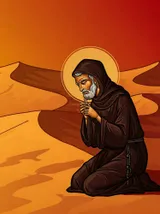106: Quiz on Easter Liturgy
What is the origin of the word "Easter"?
A) From the Hebrew word "pesach"
❌ Try again
B) From the Latin word "Pascha"
❌ Try again
C) From the name of a Teutonic goddess, Estre
✅ CORRECT!
D) From the Greek word "anastasimon"
❌ Try again
Question explanation
"The English term, according to the Ven. Bede (De temporum ratione, I, v), relates to Estre, a Teutonic goddess of the rising light of day and spring, which deity, however, is otherwise unknown, even in the Edda (Simrock, Mythol., 362); Anglo-Saxon, eâster, eâstron; Old High German, ôstra, ôstrara, ôstrarûn; German, Ostern."
What did the First Council of Nicaea decree about Easter celebration?
A) To follow the Jewish method of celebrating Easter
❌ Try again
B) To celebrate Easter on a fixed date
❌ Try again
C) To observe the Roman practice throughout the Church
✅ CORRECT!
D) To celebrate Easter on the Sunday after the Jewish Passover
❌ Try again
Question explanation
"The First Council of Nicaea (325) decreed that the Roman practice should be observed throughout the Church." This meant that Easter was to be celebrated on the first Sunday after the first full moon after the spring equinox.
Which of the following was a ceremony held in the evening on Holy Saturday in some countries?
A) Commemoration of the Resurrection of Christ
✅ CORRECT!
B) Visitation of the Sepulchre
❌ Try again
C) Easter plays
❌ Try again
D) Solemn Second Vespers of Easter Sunday
❌ Try again
Question explanation
"The gap left in the liturgical services after the solemnities of the night had been transferred to the morning of Holy Saturday was filled in France, Germany, and in some other countries by a twofold new ceremony, which, however, was never adopted in Rome. First, there was the commemoration of the Resurrection of Christ."
What ceremony represents the victorious entry of Christ into limbo and hell?
A) The procession with the cross on Holy Saturday
❌ Try again
B) The singing of "Attollite portas" at the door
✅ CORRECT!
C) The Easter plays
❌ Try again
D) The Easter Vigil
❌ Try again
Question explanation
"The singing of 'Attollite portas' (Ps. xxiii) at the door symbolizes the victorious entry of Christ into limbo and hell."
What was the purpose of Risus Paschalis?
A) To make people laugh during Easter sermons
✅ CORRECT!
B) To bless food during Easter
❌ Try again
C) To play sports during Easter celebrations
❌ Try again
D) To play a game with eggs
❌ Try again
Question explanation
"Risus Paschalis originated in Bavaria in the fifteenth century. The priest inserted in his sermon funny stories which would cause his hearers to laugh (Ostermärlein), e.g. a description of how the devil tries to keep the doors of hell locked against the descending Christ."
What does the Easter rabbit symbolize?
A) Spring
❌ Try again
B) The Resurrection of Christ
❌ Try again
C) Fertility
✅ CORRECT!
D) The victory of spring over winter
❌ Try again
Question explanation
"The Easter Rabbit is a pagan symbol and has always been an emblem of fertility (Simrock, Mythologie, 551)."
Read more

All Courses,
All About the Pope
A series of lessons that covers the purpose of the Catholic papacy and some important papal events since the Church was founded.

All Courses, Byzantine Catholic Courses,
What is the Great Fast?
This course explains the Great Fast, or Holy Lent, which is a forty-day period of preparation before Pascha involving corporal and spiritual fasting, increased prayer and repentance, and reflection on the Old Testament to renew one's baptismal commitment and deepen union with God

All Courses, Byzantine Catholic Courses,
Byzantine Catholic Fasting
This course covers the basics of Byzantine Rite fasting. The liturgical books of the Byzantine Rite say very little about fasting; in fact, they are more likely to say when food is to be eaten rather than when it is not. But the self-discipline that comes from fasting, and the watchfulness that comes from keeping vigil, are important Christian virtues, and so both fasting and vigils are an important aspect of Byzantine liturgy.

Year in Review
What did we achieve in 2024?
